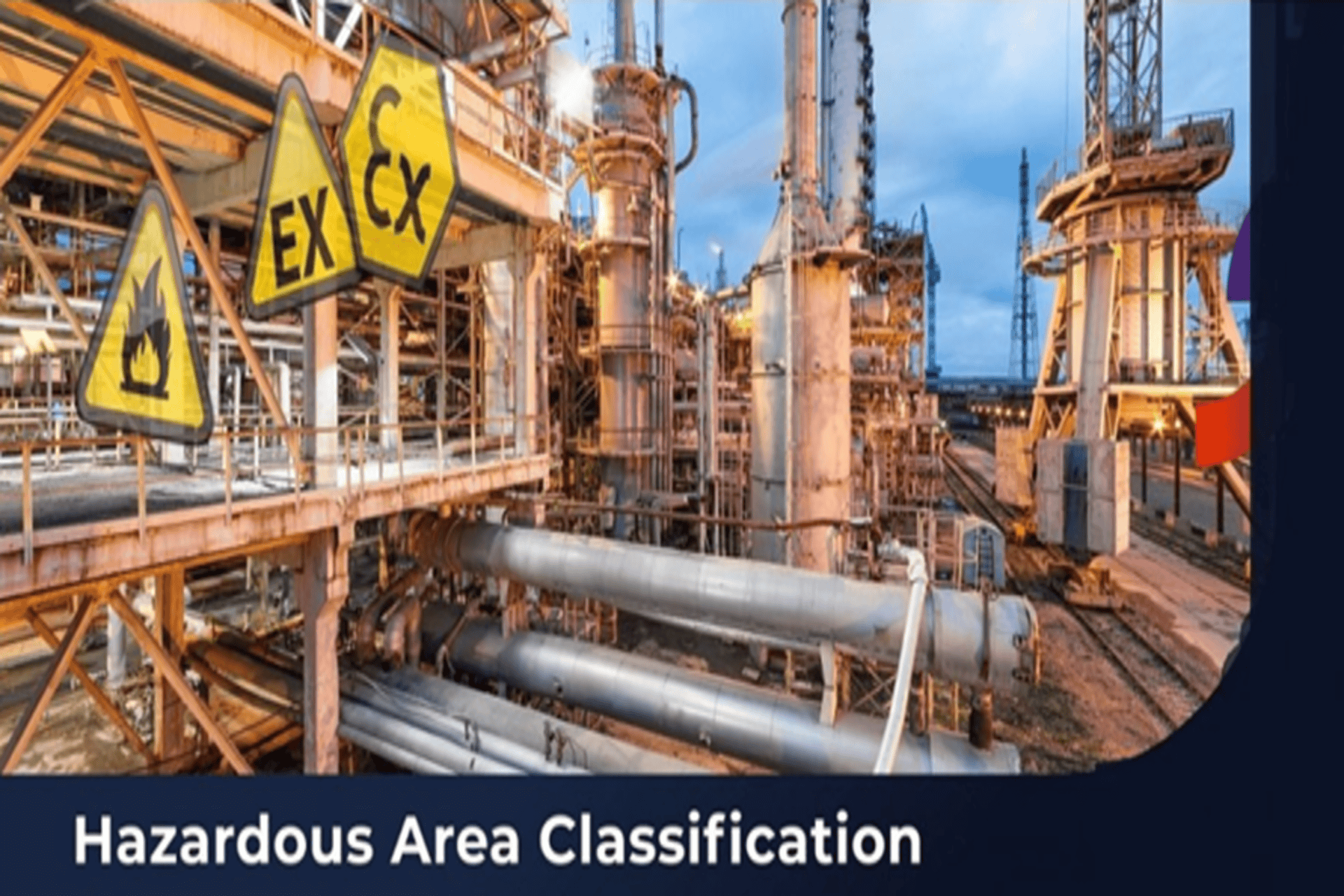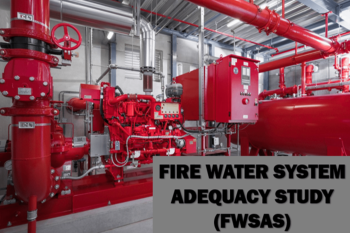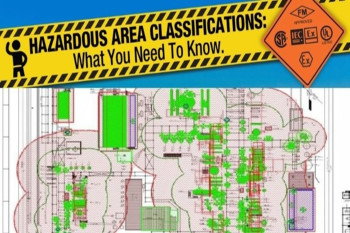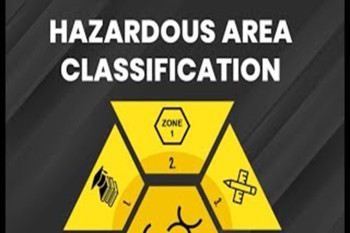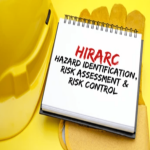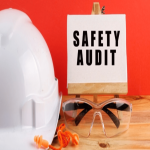METHODOLOGY FOR HAZARDOUS AREA CLASSIFICATION (HAC) STUDY-NFPA
1. Objective
The purpose of the Hazardous Area Classification study is to determine the extent of the hazardous areas around equipment handling or storing flammable fluids, combustible fluids and combustible dusts, both liquid and vapors in terms of Zone 0, Zone 1, Zone 2 and Division 1 and Division 2
The aim of hazardous area classification is to avoid ignition of those releases that may occur from time to time in the operation of facilities handling flammable liquids and vapors. The approach is to reduce to an acceptable minimum level the probability of coincidence of a flammable atmosphere and an electrical or other source of ignition occurring. In Hazardous Area Classification the extent of the hazardous areas around equipment handling or storing flammable fluids, both liquid and vapors is determined in terms of Zone 0, Zone 1, and Zone 2. The hazardous area classification around the equipment handling flammable/explosive dust is determined in terms of Division 1, Division 2.
2. Scope
The Hazardous area classification is carried out as per:
Classification of the Hazardous area for explosive dust is carried out as per NFPA 499
Classification of the Hazardous area for flammable liquids/ gases/ vapors is carried out by NFPA 497
3. HAC is carried out using Guidelines from following Standard’s latest updated revisions
NFPA-497 Classification of Flammable Liquids, Gases, or Vapors and of Hazardous(Classified) Locations for Electrical Installations in Chemical Process Areas.
NFPA–499 (Classification of Combustible Dusts and of Hazardous (Classified) Locations for Electrical Installations in Chemical Process Areas)
4. ORDER OF PRECENDENCE
NFPA 497/ NFPA 499
As per Client Guidelines
Other international standards
5. Proposed Methodology
5.1. Introduction
Hazardous Area is defined as a place/an area where concentrations of flammable gases, vapors, or dusts occur and persists in that place/area.
A hazardous area is defined as a three-dimensional space in which a flammable atmosphere may be expected to be present at such frequencies as to require special precautions for the design and construction of equipment, and the control of other potential ignition sources.
5.2. Methodology
For flammable liquids/ gases/ vapors
To determine the type of electrical installation appropriate to a particular situation, the hazardous areas have been divided into three zones, namely, Zone 0, Zone 1 and Zone 2.
The procedure of HAC involves following steps:
i. Identification of the Point Source or Source of Release:
For purpose of HAC the point source or source of release is defined as a point from which a flammable gas vapor or liquid may be released in the atmosphere. Typically this includes equipment that has the potential to leak (e.g. various items of plant equipment, pipe work, flow lines, flanges, valves, seals, instrument connections, nozzles) or part of a system or equipment that may release hydrocarbons to atmosphere (e.g. sumps, pits, vents, bunds, drains)
ii. Determine the Grade of Release:
Three grades of release are defined in terms of their likely frequency and duration (definitions reference is taken from Model Code of Safe Practice -IP Part 15, Area Classification Code for installations handling flammable fluids):
Continuous Grade release (C): A release that is continuous or nearly so, or that occurs frequently and for short periods.
Primary Grade release (P): A release that is likely to occur periodically or occasionally in normal operation, that is, a release which, in operative procedures, is anticipated to occur.
Secondary grade release (S): A release that is unlikely to occur in normal operation and, in any event, will do so only infrequently and for short periods, that is, a release which, in operating procedures, is not anticipated to occur.
The grade of release is dependent solely on the frequency and duration of the release. It is completely independent of the rate and quantity of the release, the degree of ventilation, or the characteristics of the fluid, although these factors determine the extent of vapor travel and in consequence the dimensional limits of the hazardous zone.
Most of the releases are considered as secondary grade releases i.e. releases are from valves, flanges, sampling and drainage point, instrument connections and pumps.
Grade of release is calculated as per INDIAN STANDARD (IS) 5572: 2009 – Classification of Hazardous Areas (Other than Mines) having Flammable Gases and Vapors for Electrical Installation. The first step in Hazard Area Classification is preparation of summary of characteristics of fluid and dust.
The release of vapor in tank/vessel is from vent & leakages of nozzles / instrument nozzles / flange joints. The release from vent is during transferring operation which is periodical in nature, so the release from vent is primary Grade Release (P). The release from leakages is not the part of procedure / operation & not anticipated to occur, so the release from vent is Secondary Grade Release(S).
iii. Determine the Class of the Fluid:
Flammable Liquids vary in volatility and have a flash point below 930C and a Vapor Pressure not exceeding 2.81 kg/cm2 at 37.80C. These are divided into three classes, as follows,
Class A : Flammable liquids having flash point below 23° C
Class B : Flammable liquids having flash point 23° C and above but below 65°C
Class C : Flammable liquids having flash point 65° C and above but below 93°C
iv. Area Classification (As per NFPA 497):
Class-1 Zone 0 Areas: A Class I, Zone 0 location is a location that meets the following conditions:
Ignitable concentrations of flammable gases or vapors that are present continuously
Ignitable concentrations of flammable gases or vapors that are present for long periods of time.
Class I, Zone 1. Areas: A Class I, Zone 1 location is a location that meets the following conditions
Ignitable concentrations of flammable gases or vapors that are likely to exist under normal operating conditions.
Ignitable concentrations of flammable gases or vapors that may exist frequently because of repair or maintenance operations or because of leakage.
Equipment that is operated or processes that are carried on, of such a nature that equipment breakdown or faulty operations could result in the release of ignitable concentrations of flammable gases or vapors, and that also could cause simultaneous failure of electrical equipment in a mode to cause the electrical equipment to become a source of ignition.
Being adjacent to a Class I, Zone 0 location from which ignitable concentrations of vapors could be communicated, unless communication is prevented by adequate positive-pressure ventilation from a source of clean air and effective safeguards against ventilation failure are provided
Class I, Zone 2 Areas: A Class I, Zone 2 location is a location that meets the following conditions
Ignitable concentrations of flammable gases or vapors that are not likely to occur in normal operation, and if they do occur, they will exist only for a short period.
Volatile flammable liquids, flammable gases, or flammable vapors that are handled, processed, or used, but in which the liquids, gases, or vapors normally are confined within closed containers or closed systems from which they can escape only as a result of accidental rupture or breakdown of the containers or system, or as the result of the abnormal operation of the equipment with which the liquids or gases are handled, processed, or used.
Ignitable concentrations of flammable gases or vapors that normally are prevented by positive mechanical ventilation, but that may become hazardous as the result of failure or abnormal operation of the ventilation equipment.
Being adjacent to a Class I, Zone 1 location, from which ignitable concentrations of flammable gases or vapors could be communicated, unless such communication is prevented by adequate positive-pressure ventilation from a source of clean air, and effective safeguards against ventilation failure are provided.
Methodology for Flammable liquid, vapors and Combustible Dusts
The procedure of HAC involves following steps:
Review Process Flow diagram
Prepare separate table for liquid and solid chemical along With flammable/combustible Properties
Classification of material as per NFPA-497
Selecting the Appropriate Classification Diagram
Determine the Zone classification
Determine Extent of the Classified Location
Review and recommendation
To enable selection of electrical equipment appropriate to the zone classification, the apparatus sub group and temperature class is then determined based on the flammable substances that can be release.
For Explosive dusts
General
The procedure for identifying zones of risk
a. The first step is to identify the material characteristics, whether it is combustible and, for the purposes of apparatus selection, particle size, moisture content, cloud and a layer, minimum ignition temperature and electrical resistivity.
b. The Second step is to identify where dust containment or sources of dust release can be present. It may be necessary to consult a process drawings and plant layout
c. The third step is to determine the likelihood that dust will be released from those sources and thus, the likelihood of explosive dust/air mixtures in various parts of installation
It is only after these steps that the zones can be identified and their extents defined. The decisions on the zone types and extent and the presence of dust layers shall be recorded on the area classification drawing. (The drawing is to be used subsequently as the basis for the selection of equipment).
i. Sources of release for explosive dust atmospheres
Explosive dust atmospheres are formed from sources of dust release. A source of dust release is a point or location from which combustible dust can be released or raised, such that an explosive dust/air atmosphere can be formed. This definition includes layers of combustible dust capable of being dispersed to form a dust cloud.
ii. Identification of sources of release
The conditions need to be identified in which process equipment; process steps or other actions expected in plants can form explosive dust/air mixtures or create combustible dust layers. It is necessary to consider separately the inside and outside of a dust containment.
iii. Sources of release
Many factors can influence the area classification. Where higher than atmospheric pressures are used within the dust containment (e.g. positive pressure pneumatic transfer) dust can easily be blown out of leaking equipment. In the case of negative pressure within the dust containment, the likelihood of formation of dusty areas outside the equipment is very low. Dust particle size, moisture content and. where applicable, transport velocity, dust extraction rate and fall height can influence release rate potential.
Grade of release are as follows
Primary grade of release, e.g. close vicinity around an open bag filling or emptying point;
Secondary grade of release, e.g. man-holes that need to be opened occasionally
iv. Area Classification (As per NFPA 499)
Division-1 Classified Area: This section contains classification diagrams. These diagrams assume that the specific particle density is greater than 40 lb. /ft3 (640.72 kg/m3).
If a dust layer greater than 1/8 in. thick is present under normal conditions, the area should be classified as Division 1.
Division 2 Classified Area: The criterion for a Division 2 area is whether the area is likely to have ignitable dust suspensions or hazardous dust accumulations only under abnormal conditions. The term “abnormal” is used here in a limited sense and does not include a major catastrophe.
Unclassified Area: Experience has shown that the release of ignitable dust suspensions from some operations and apparatus is so infrequent that area classification is not necessary.
Table 1 Explosive dust area classification as per NFPA 499
Methodology for Combustible solids
The procedure of HAC involves following steps:
Need For Classification
Facility information & history
Classification of material as per NFPA-499
Selecting the Appropriate Classification Diagram
Determine the Zone classification
Determine Extent of the Classified Location
Review and recommendation
To enable selection of electrical equipment appropriate to the zone classification, the apparatus sub group and temperature class is then determined based on the flammable substances that can be release.
5.3. Project Deliverables
Table 1: HAC Study
5.4. Software to be used
AutoCAD
DISCLAIMER
HSE Risk Management Services Private Limited accepts no liability or responsibility whatsoever for it in respect of any use of or reliance upon this Methodology by any third party.
Copying this Methodology without the permission of HSE Risk Management Services Private Limited is not permitted.
